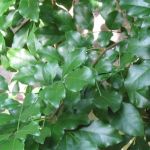| Common Name: |
Mock Lime |
| Other Names: |
Chinese Perfume Plant |
| Botanical Name: |
Aglaia odorata |
| Genus: |
Aglaia |
| Family: |
Meliaceae |
| Native Location: |
SE Asia and China |
| Cultivation: |
Rich, well-drained soil with ample moisture, warmth, and humidity; in sun or partial shade. |
| Propagation: |
By semi-ripe cutting in summer |
| Harvest: |
Leaves are picked during the growing season and used fresh or dried in decoctions. Flowers are gathered as they open then dried for infusions and scented articles. Renew dried parts annually for medicinal use. |
| Height: |
15m (50ft) |
| Width: |
10m (30ft) |
| Hardiness: |
Min. 15-18°C (59-64°F) |
| Parts Used: |
Leaves, flowers |
| Properties: |
An aromatic, tonic herb that lowers fevers. |
| Medicinal Uses: |
Internally for feverish and convulsive illnesses, and menopausal problems. |
| Culinary Uses: |
Dried flowers are used to scent tea (China). Young leaves are eaten as a vegetable. |
| Economic Uses: |
Flowers are used to make joss sticks and potpourris. |
| Bibliography: |
Encyclopedia of Herbs by Deni Brown Copyright © 1995, 2001 Dorling Kindersley Limited. Pg 107 |

